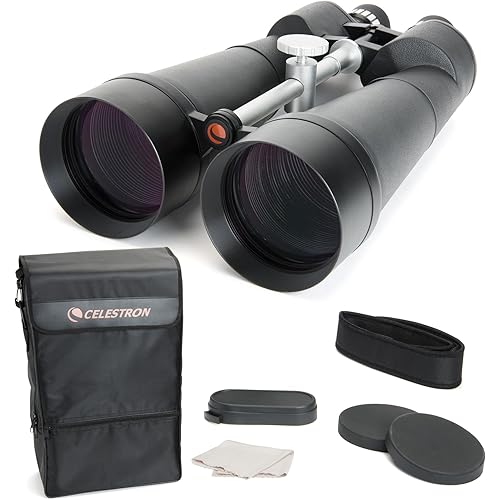Celestron SkyMaster 25x70 Binoculars – Powerful Binoculars for Detailed Long-Distance Viewing and Binocular Astronomy – Multi-Coated Optics – Tripod Adapter & Carrying Case







Buy Now, Pay Later
- – 6-month term
- – No impact on credit
- – Instant approval decision
- – Secure and straightforward checkout
Ready to go? Add this product to your cart and select a plan during checkout.
Payment plans are offered through our trusted finance partners Klarna, Affirm, Afterpay, Apple Pay, and PayTomorrow. No-credit-needed leasing options through Acima may also be available at checkout.
Learn more about financing & leasing here.
Selected Option
FREE refund/replacement until Jan 31, 2026 Learn more
To qualify for a full refund, items must be returned in their original, unused condition. If an item is returned in a used, damaged, or materially different state, you may be granted a partial refund.
To initiate a return, please visit our Returns Center.
View our full returns policy here.
Recently Viewed
Style: SkyMaster 25x70
Features
- POWERFUL 25X MAGNIFICATION: Giant astronomy binoculars with massive 70mm objective lenses and 25x power. Pair them with any tripod for long-distance land-based viewing or astronomical observation.
- WORKS WITH YOUR TRIPOD: Due to their size/weight and high magnification, most users mount SkyMaster binoculars on a traditional photo tripod (not included). The included 14-20 adapter attaches to most tripods in seconds.
- BRIGHT, SHARP VIEWS WITH BaK-4 PRISMS: The SkyMaster is a favorite among those who view in dim conditions near dawn and dusk or at night for astronomy. BaK-4 prisms maximize light throughput to your eye so you see brighter, more detailed images.
- DURABLE AND WATER-RESISTANT: A rubber-armored housing protects your binoculars from damage and provides a secure gripping surface. The water-resistant exterior stands up to tough conditions and unexpected rainy weather.
- UNBEATABLE WARRANTY & CUSTOMER SUPPORT: Buy with confidence from Celestron, a leading optics brand in California since 1960. Your purchase includes a Celestron Limited Lifetime US Warranty & US-based expert tech support.
Description
Celestron has designed and engineered the larger SkyMaster models to meet the special demands of extended astronomical or terrestrial viewing sessions. This special 25x70 version brings you even closer to the action, with the highest boost in power you’ll find in our fixed magnification binoculars. Due to its weight, size (including its very large objective lenses), and very high magnification levels, this binocular should be mounted on a standard photographic tripod for extended periods of use. We’ve included a tripod adapter rod that allows you to mount your SkyMaster binoculars on any sturdy ¼”-20 photographic tripod in seconds. These large & extra-powerful binoculars ensure high performance in all weather conditions and are ideal for astronomical viewing or terrestrial (land-based) viewing over long distances. Astronomers have praised the Celestron SkyMaster for decades for its high- quality BaK-4 prisms and multi-coated optics, which enhance contrast and bring out bright, sharp images—especially in low light conditions. The binocular features soft, comfortable rubber eyecups that block stray light. Eyeglass wearers can fold down the eyecups and view with their eyeglasses on. Your purchase of the Celestron SkyMaster 25x70 binoculars includes the tripod adapter, objective lens caps, a rainguard, a deluxe carrying case, a neck strap, a lens cloth, and an instruction manual. Buy with confidence from the world’s No.1 telescope brand and a leading binocular manufacturer, based in California since 1960.
Brand: Celestron
Age Range (Description): Adult
Special Feature: Ultra sharp focus across the field of view
Objective Lens Diameter: 70.0
Magnification Maximum: 25 x
Product Dimensions: 11 x 14 x 6 inches
Item Weight: 3.1 pounds
Item model number: 71008
Is Discontinued By Manufacturer: No
Date First Available: June 17, 2003
Department: unisex-adult
Manufacturer: Celestron
Language: English
Frequently asked questions
To initiate a return, please visit our Returns Center.
View our full returns policy here.
- Klarna Financing
- Affirm Pay in 4
- Affirm Financing
- Afterpay Financing
- PayTomorrow Financing
- Financing through Apple Pay
Learn more about financing & leasing here.
Similar Products
Top Amazon Reviews































